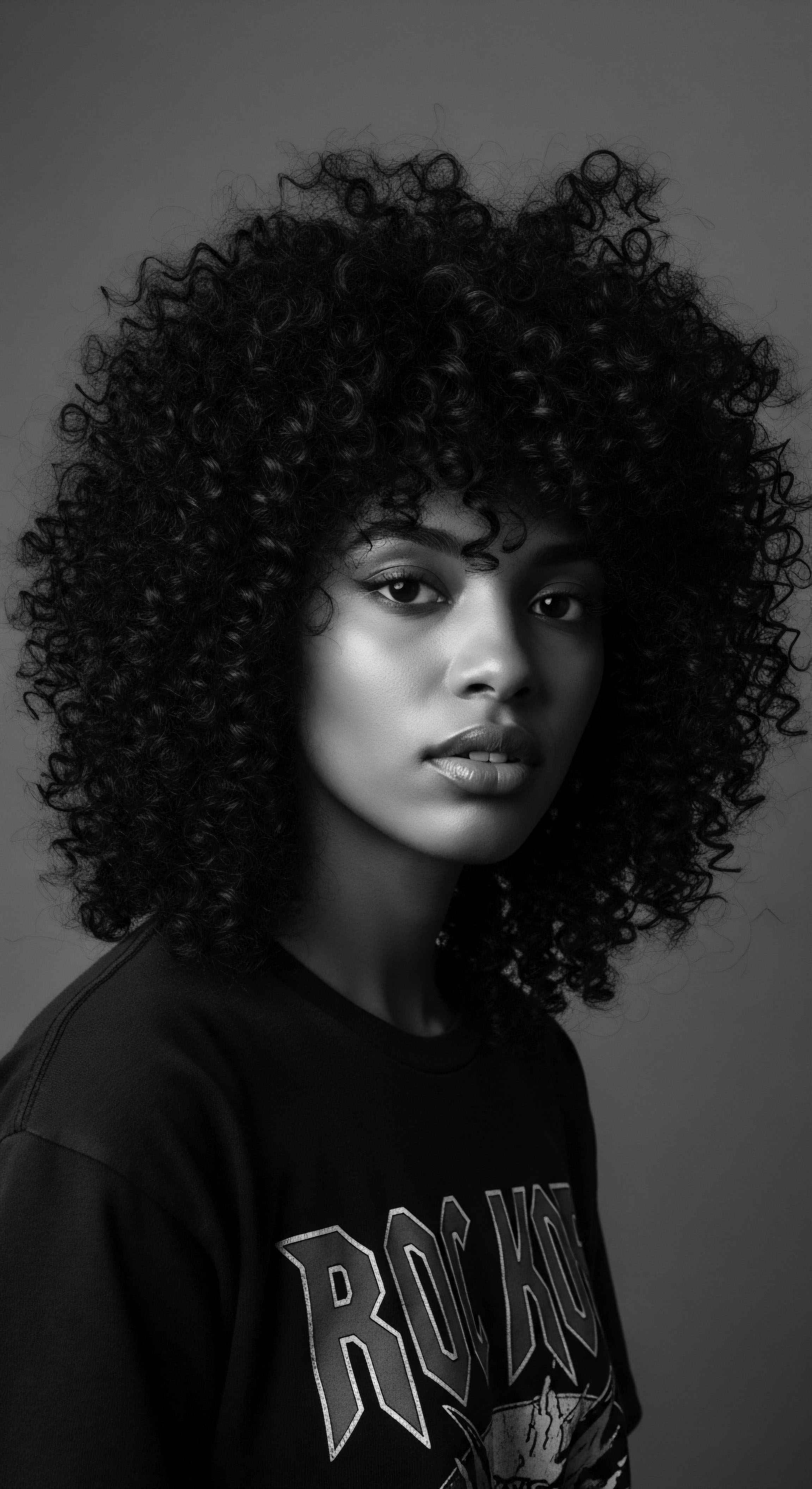
Roots
Consider, for a moment, the hair upon your head. It is more than mere protein and pigment; it is a living archive, a delicate scroll upon which centuries of ancestral wisdom are inscribed. How does ancestral heritage shape hair? This query reaches far beyond simple biology, beckoning us into the deep currents of time, into communal memory, and into the very essence of human journeying.
For those of us blessed with the magnificent diversity of textured hair, this connection to the past is not an abstract concept; it lives in every ripple, every coil, every resilient strand. Our hair is a direct, vibrant link to forebears who walked ancient earth, whose lives and environments left an indelible mark, sculpting the very nature of what crowns us.
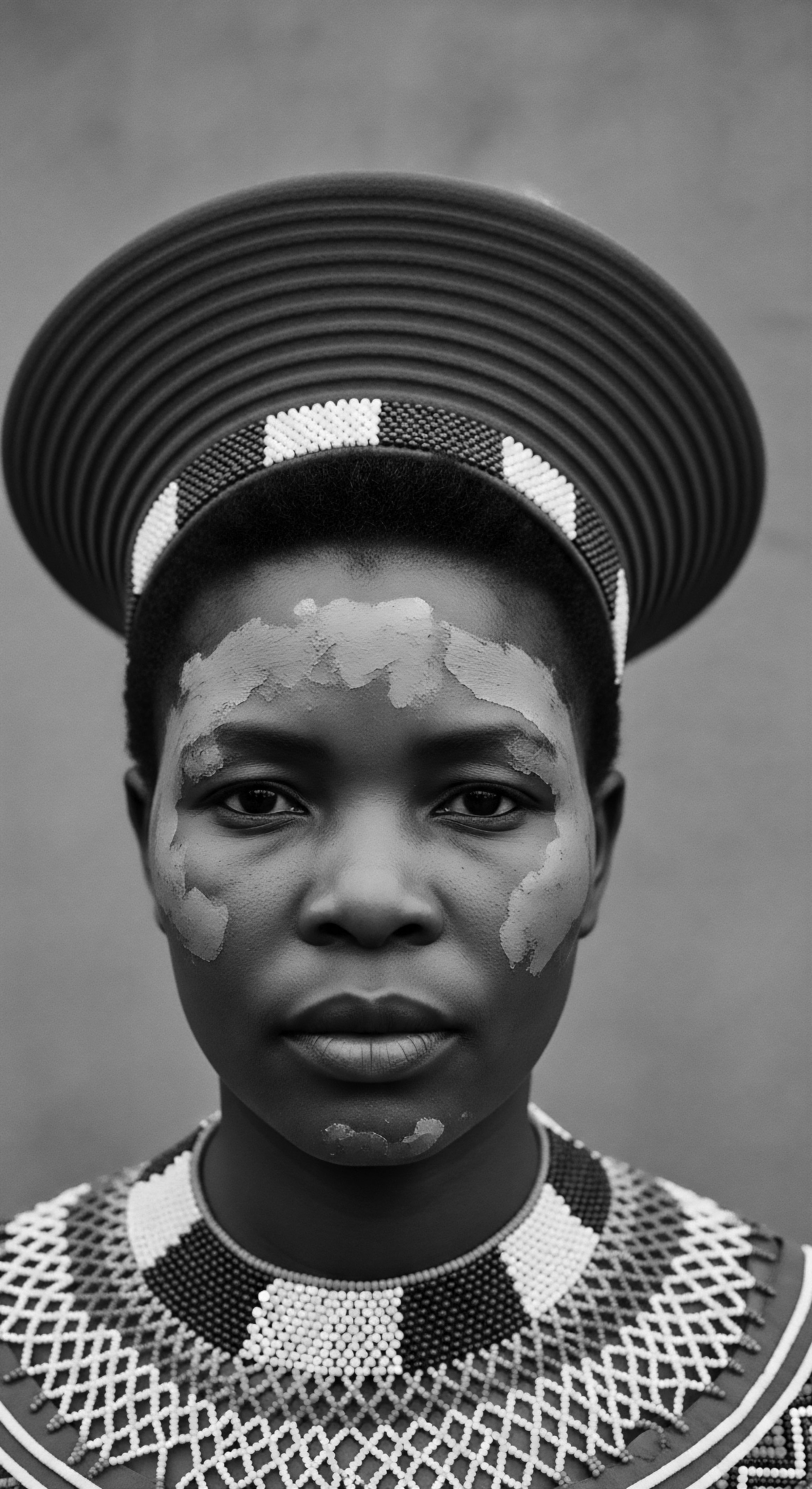
The Seed of Structure
The physical blueprint of textured hair, its unique helical twists and turns, begins at the follicular level. Here, within the scalp, the shape of each hair follicle dictates the strand’s eventual curl pattern. A flatter, more elliptical follicle produces hair with a tighter curl, while a rounder follicle gives rise to straighter forms. This morphological distinction, so central to the diversity we observe, did not simply appear at random.
It represents a profound dialogue between human lineage and the environments of our distant past. Early humans, particularly those residing in equatorial Africa, encountered intense solar radiation. The tightly coiled hair patterns, a hallmark of many African ancestries, represent a significant adaptive trait. Research, including insights from Tina Lasisi’s work, suggests that this specific curl pattern provided optimal protection against the sun’s radiative heat, minimizing the need for the body to expend valuable water through sweating to regulate temperature. This passive cooling mechanism may have played a consequential role in supporting the growth of the human brain to its modern dimensions.
Hair stands as a testament to deep ancestral narratives, with its fundamental structure whispering tales of environmental adaptation and enduring resilience.
This biological inheritance, shaped by epochs of survival, extends beyond the macroscopic curl. The internal architecture of textured hair, with its unique distribution of cortical cells and a higher density of disulfide bonds, renders it both distinctively strong in its coiled integrity and, paradoxically, more vulnerable to mechanical stress. The very physics of its tight curves means that natural oils struggle to travel from scalp to tip, often leading to a perception of dryness. Yet, this characteristic, often misinterpreted in modern contexts, was likely a perfectly balanced adaptation within ancestral environments where the air held more humidity, and daily care practices centered on natural emollients.

What Ancient People Understood About Hair?
Long before microscopy and genetic mapping, ancestral communities possessed a profound empirical understanding of hair. They perceived its varied forms, not through numerical classifications, but through a lens of lived experience, spiritual connection, and social encoding. Hairstyles in pre-colonial African societies served as intricate forms of communication, conveying age, marital status, social rank, tribal affiliation, and even spiritual beliefs. The Yoruba people of Nigeria, for example, devised elaborate hairstyles that spoke volumes about an individual’s community role.
Hair was frequently considered sacred, a conduit for spiritual energy connecting individuals to their ancestors and deities. This deep, contextual knowledge formed a foundational lexicon, one where terms for hair extended beyond mere description to convey social and spiritual significance.
| Aspect of Hair Hair Texture |
| Ancestral Context (Pre-Colonial Africa) Seen as a marker of lineage, climate adaptation, and spiritual connection. Different curl patterns linked to specific tribal identities or roles. |
| Modern Scientific Parallel Correlated with follicle shape (elliptical for curls), cortical cell distribution, and disulfide bond density. A genetic adaptation for thermoregulation. |
| Aspect of Hair Hair Health |
| Ancestral Context (Pre-Colonial Africa) Observed through luster, elasticity, and growth; maintained with natural ingredients like shea butter and plant oils. |
| Modern Scientific Parallel Understood through protein integrity (keratin), lipid content, and hydration levels. Proper care supports cuticle health and moisture retention. |
| Aspect of Hair Hair as Identity |
| Ancestral Context (Pre-Colonial Africa) Served as a social identifier, indicating age, marital status, social rank, tribal affiliation, and rites of passage. |
| Modern Scientific Parallel Recognized as a profound personal and collective identity marker, shaping self-perception and cultural belonging. |
| Aspect of Hair Ancestral wisdom and modern scientific inquiry both affirm the deep significance and unique properties of textured hair. |
The rich lexicon used to speak of hair varied across communities, but a common thread persisted ❉ hair was a living extension of the self and community. Terms might describe not just the curl type, but the ‘spirit’ of the hair, its responsiveness to care, or its symbolic weight. This holistic approach recognized that what grew from the scalp was inseparable from the person, their community, and their legacy.

Inherited Resilience and Hair Growth
The growth cycle of textured hair, while sharing universal biological phases, has also been influenced by ancestral living conditions. Factors such as nutrition, access to diverse plant-based resources, and environmental humidity in various ancestral homelands likely supported hair vitality. While modern science can precisely chart the anagen, catagen, and telogen phases, ancestral practices intuitively recognized periods of growth and rest, adjusting care accordingly.
The resilience of textured hair, often observed in its capacity to retain length through protective styles, is a quality that surely benefited early communities, reducing breakage and maintaining scalp health in diverse climates. The connection between ancestry and hair growth goes beyond mere genetics; it involves the inherited wisdom of cultivating an environment, both internal and external, that allows hair to thrive.

Ritual
The tending of textured hair has never been a mundane chore; it is an act steeped in ritual, a continuation of practices passed across generations. How does ancestral heritage shape hair in the realm of styling? It manifests as a profound language, a communal practice, and a testament to enduring spirit. From the earliest known civilizations, styling hair was a conduit for expressing self, status, and collective belonging, evolving from essential grooming into sophisticated art forms.
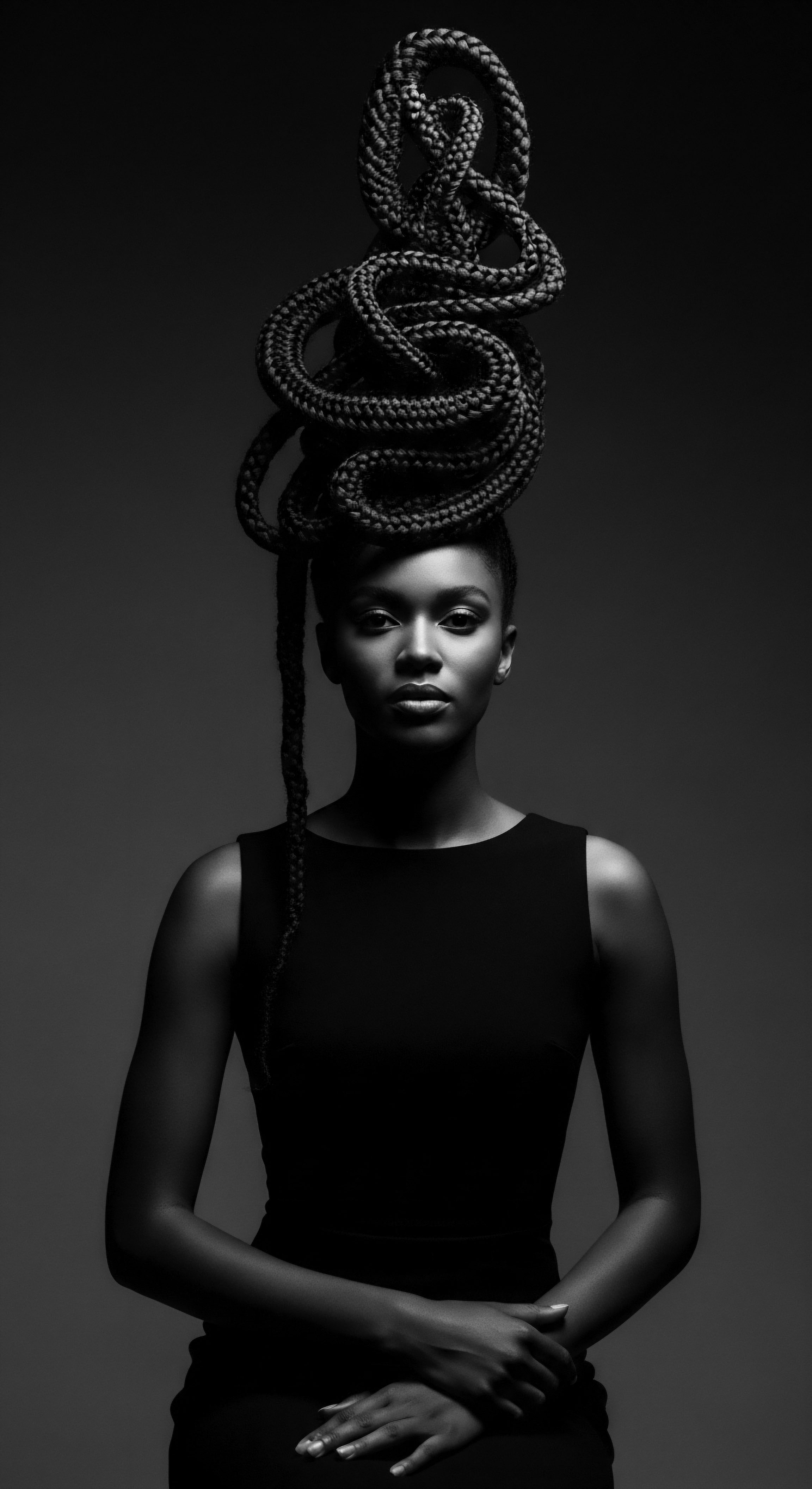
Styling as a Living Legacy
For millennia, the art of styling textured hair has transcended mere aesthetics. It served as a canvas for cultural expression, a means of communication, and a symbol of resistance. In many West African societies, the act of braiding was not just a skill; it was a social activity, a time for bonding and sharing stories among women. Styles themselves conveyed messages, indicating age, marital status, wealth, or spiritual devotion.
The intricate patterns spoke volumes without a single word. This rich legacy of hair as a profound communication medium carried forward even into the most challenging periods of history.
Hair styling, viewed through the lens of heritage, stands as a vibrant language for identity and communal connection, evolving through millennia.
One particularly poignant example of this living legacy unfolds during the horrific era of the transatlantic slave trade. Stripped of their languages, customs, and dignity, enslaved Africans found clandestine ways to preserve their heritage. Cornrows, a traditional African braiding style, became a covert communication system. In places such as Colombia, enslaved individuals ingeniously braided intricate patterns into their hair, patterns that served as maps, indicating escape routes, safe houses, or directions to freedom.
This practice, recorded in historical accounts, exemplifies the remarkable resilience and ingenuity of those who transformed a forced act of grooming into a powerful tool of liberation and cultural memory. The very strands of hair became coded pathways to survival, a quiet, yet defiant, act of self-determination.

Tools from the Ancestral Hand
Central to these styling rituals were the tools, objects often crafted with intention and artistry. The earliest known examples of hair combs, strikingly similar to what we now recognize as Afro combs, were unearthed in ancient Kush and Kemet (present-day Sudan and Egypt), dating back as far as 7,000 years. These combs, fashioned from wood, bone, and ivory, were more than utilitarian instruments; they were decorated with symbols reflecting respect for nature, status, and even spiritual significance. Their long, wide-set teeth were implicitly designed for textured hair, a testament to an ancient understanding of its unique needs.
The evolution of these tools parallels the journey of textured hair itself. As communities migrated and conditions changed, so too did the materials and designs of the combs and other styling implements. Yet, the underlying principle remained consistent ❉ a tool crafted with consideration for the hair’s inherent structure, designed to detangle, adorn, and sculpt with care.
- Bone Combs ❉ Early examples dating back millennia, often intricately carved, found in archaeological sites across Africa.
- Wooden Pins ❉ Used for parting, sectioning, and securing styles, reflecting diverse regional craftsmanship.
- Natural Adornments ❉ Beads, cowrie shells, and natural fibers incorporated into styles, signifying status, celebrations, or tribal identity.
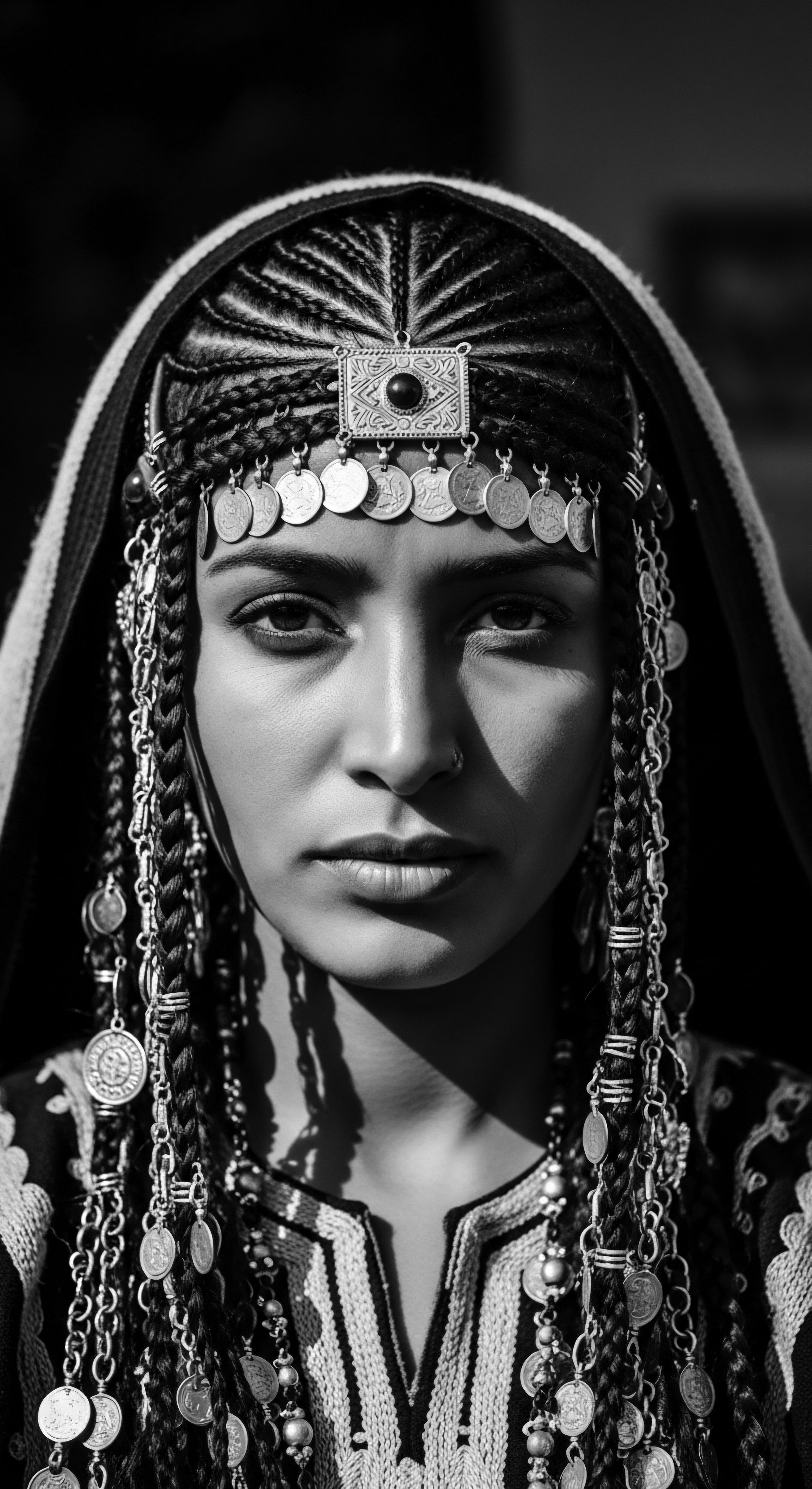
Protective Styling Through Time
The concept of protective styling is deeply rooted in ancestral practices. Styles such as braids, twists, and locs, now recognized globally for their ability to safeguard hair from environmental damage and mechanical stress, have existed for thousands of years. These were not merely aesthetic choices; they were functional, preserving hair health and length while often signaling complex social information.
| Historical Adornment Cowrie Shells |
| Cultural Significance Symbolized wealth, fertility, and spiritual protection in many West African cultures. |
| Contemporary Relevance Used decoratively in braids and locs, maintaining a link to prosperity and African identity. |
| Historical Adornment Beads (Glass, Clay) |
| Cultural Significance Indicated status, age, or ceremonial participation; often used in traditional rites of passage. |
| Contemporary Relevance Popular for personal expression and adding artistic flair to styles, often chosen for their aesthetic appeal and cultural connection. |
| Historical Adornment Natural Fibers |
| Cultural Significance Used to extend or volumize hair for ceremonial styles, connecting to the natural environment. |
| Contemporary Relevance Fibers like kanekalon or synthetic extensions are used for added length, volume, and versatility in modern protective styles. |
| Historical Adornment Adornments, though their exact meaning may shift, continue to connect hair to a rich heritage of symbolism and beauty. |
The creation of these styles was often a communal act, reinforcing social bonds. The hours spent in collective grooming fostered dialogue, passed down techniques from elder to youth, and strengthened the fabric of family and community. This communal aspect of hair care remains a powerful part of the textured hair experience today, a testament to its enduring role beyond personal appearance.

Relay
The continuum of textured hair heritage extends into the daily acts of care, those intimate regimens that nourish and sustain. How does ancestral heritage shape hair in its holistic wellness and problem-solving? It provides a profound framework, one that views hair not in isolation, but as an integral part of physical, spiritual, and communal wellbeing. This understanding, rooted in ancestral wisdom, informs practices that resonate with contemporary scientific insights.

The Wisdom of Holistic Care
Ancestral communities understood hair health as an aspect of overall vitality, deeply connected to diet, environment, and spiritual balance. Their approach was inherently holistic, recognizing the interplay of internal and external factors. This perspective stands in subtle counterpoint to more fragmented modern approaches, urging us to consider the body as a whole. While genetic factors play a primary role in hair texture and characteristics, environmental adaptations also stand as a powerful influence.
The inherent qualities of textured hair, such as its elliptical cross-section and unique disulfide bond arrangements, which contribute to its curl, also impact its moisture dynamics. Ancestral practices, refined over generations, intuitively addressed these needs, for instance, through consistent moisture application and protective styling.
Ancestral approaches to hair care reveal a holistic wisdom, intertwining physical nourishment with spiritual and communal wellbeing.
The legacy of this holistic framework encourages us to consider the profound impact of internal nourishment on hair vitality. Ancestral diets rich in diverse whole foods, often sourced locally, supplied the essential vitamins and minerals required for robust hair growth. The concept of ‘feeding’ the hair from within is not a new discovery; it is a timeless principle reaffirmed by modern nutritional science.

The Nighttime Sanctuary
Among the most enduring and universally recognized ancestral practices in textured hair care is the ritual of nighttime protection. For countless generations, the headwrap, bonnet, or silk scarf has served as a guardian of delicate strands. This practice, far from being merely a beauty secret, carried significant historical and cultural weight.
During the era of enslavement, headwraps became a powerful symbol of dignity and resilience for African women in the diaspora. They protected hair from harsh conditions while simultaneously defying European-imposed beauty standards that often denigrated natural hair.
Today, science validates the ancestral wisdom behind this practice. Protecting hair at night minimizes friction, reduces moisture loss to absorbent fabrics, and preserves intricate styles, thereby preventing breakage and maintaining the hair’s natural moisture balance. The silk or satin bonnet, a modern descendant of these ancestral head coverings, stands as a quiet tribute to this enduring legacy of care.
- Silk Bonnets ❉ A modern iteration of ancestral head coverings, minimizing friction and preserving hair moisture during sleep.
- Satin Scarves ❉ Similar to silk, these smooth fabrics reduce tugging and breakage, maintaining hair integrity.
- Pineapple Method ❉ A contemporary technique of gathering hair on top of the head before sleeping, often in conjunction with protective wraps, to safeguard curl definition.

Ingredients from the Earth’s Bounty
The ancestral pharmacy for hair care was the natural world itself. Communities across Africa and the diaspora developed deep knowledge of local botanicals, oils, and clays, recognizing their capacity to cleanse, condition, and heal. Ingredients like Shea Butter, derived from the nuts of the African shea tree, were prized for their emollient and protective qualities, used to moisturize and seal hair. Other traditional ingredients might include various plant oils, herbs for cleansing infusions, and natural clays for scalp purification.
| Ingredient Shea Butter |
| Traditional Use (Ancestral) Deep moisturizer, sealant, protective barrier against sun and wind, used for styling. |
| Modern Scientific Understanding Rich in fatty acids (oleic, stearic), vitamins A and E; provides emollients, reduces transepidermal water loss. |
| Ingredient Coconut Oil |
| Traditional Use (Ancestral) Conditioner, detangler, luster enhancer, used in various hair rituals. |
| Modern Scientific Understanding Penetrates hair shaft, reduces protein loss, provides fatty acids (lauric acid) for conditioning. |
| Ingredient Aloe Vera |
| Traditional Use (Ancestral) Soothing agent for scalp irritation, mild cleanser, hair strengthener. |
| Modern Scientific Understanding Contains enzymes, vitamins, minerals; anti-inflammatory, moisturizing, and mild cleansing properties. |
| Ingredient Hibiscus |
| Traditional Use (Ancestral) Promotes growth, prevents hair loss, natural hair dye in some traditions. |
| Modern Scientific Understanding Rich in amino acids, antioxidants; strengthens roots, conditions hair, stimulates follicles. |
| Ingredient The enduring efficacy of these natural remedies is now frequently affirmed by contemporary research into their molecular properties. |
This ancestral wisdom, connecting specific plant properties to hair needs, finds a parallel in modern cosmetic science. Today’s research frequently isolates active compounds from these very botanicals, providing molecular explanations for the efficacy observed and practiced for centuries. It serves as a powerful reminder that the most sophisticated solutions sometimes spring from the simplest, most ancient sources.
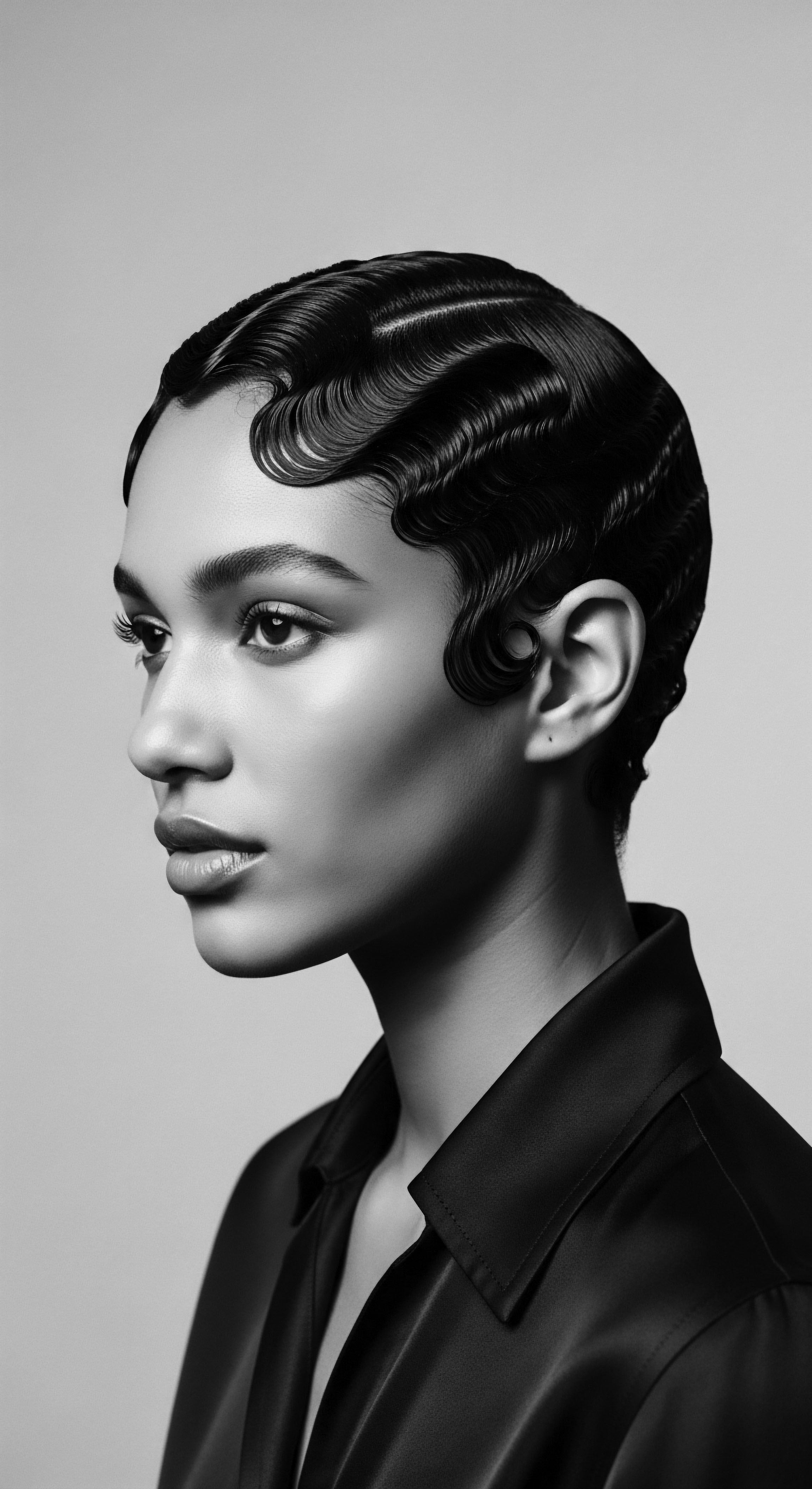
Solving Hair’s Challenges
Ancestral communities, like those today, confronted challenges to hair health, be it breakage, dryness, or scalp irritation. Their problem-solving methodologies were rooted in keen observation and iterative practice. They understood, for instance, that tightly coiling hair, while providing protection, also meant a natural struggle for scalp oils to spread down the strand. Remedies focused on constant re-application of emollients, gentle manipulation, and protective styles that minimized exposure to harsh elements.
The resilience inherent in textured hair, a trait cultivated through generations of environmental adaptation, was also bolstered by consistent care practices. Hair breakage, a common concern for highly coiled hair due to its unique structure and points of weakness, was addressed through tender detangling, the use of wide-toothed tools, and styles that reduced daily friction. This ancestral ingenuity in problem-solving, without the benefit of modern scientific instruments, highlights a profound, intuitive understanding of hair’s needs and its connection to the overall health of the person.

Relay
The continuum of textured hair heritage extends into the daily acts of care, those intimate regimens that nourish and sustain. How does ancestral heritage shape hair in its holistic wellness and problem-solving? It provides a profound framework, one that views hair not in isolation, but as an integral part of physical, spiritual, and communal wellbeing. This understanding, rooted in ancestral wisdom, informs practices that resonate with contemporary scientific insights.

The Wisdom of Holistic Care
Ancestral communities understood hair health as an aspect of overall vitality, deeply connected to diet, environment, and spiritual balance. Their approach was inherently holistic, recognizing the interplay of internal and external factors. This perspective stands in subtle counterpoint to more fragmented modern approaches, urging us to consider the body as a whole. While genetic factors play a primary role in hair texture and characteristics, environmental adaptations also stand as a powerful influence.
The inherent qualities of textured hair, such as its elliptical cross-section and unique disulfide bond arrangements, which contribute to its curl, also impact its moisture dynamics. Ancestral practices, refined over generations, intuitively addressed these needs, for instance, through consistent moisture application and protective styling.
Ancestral approaches to hair care reveal a holistic wisdom, intertwining physical nourishment with spiritual and communal wellbeing.
The legacy of this holistic framework encourages us to consider the profound impact of internal nourishment on hair vitality. Ancestral diets rich in diverse whole foods, often sourced locally, supplied the essential vitamins and minerals required for robust hair growth. The concept of ‘feeding’ the hair from within is not a new discovery; it is a timeless principle reaffirmed by modern nutritional science.

The Nighttime Sanctuary
Among the most enduring and universally recognized ancestral practices in textured hair care is the ritual of nighttime protection. For countless generations, the headwrap, bonnet, or silk scarf has served as a guardian of delicate strands. This practice, far from being merely a beauty secret, carried significant historical and cultural weight.
During the era of enslavement, headwraps became a powerful symbol of dignity and resilience for African women in the diaspora. They protected hair from harsh conditions while simultaneously defying European-imposed beauty standards that often denigrated natural hair.
Today, science validates the ancestral wisdom behind this practice. Protecting hair at night minimizes friction, reduces moisture loss to absorbent fabrics, and preserves intricate styles, thereby preventing breakage and maintaining the hair’s natural moisture balance. The silk or satin bonnet, a modern descendant of these ancestral head coverings, stands as a quiet tribute to this enduring legacy of care.
- Silk Bonnets ❉ A modern iteration of ancestral head coverings, minimizing friction and preserving hair moisture during sleep.
- Satin Scarves ❉ Similar to silk, these smooth fabrics reduce tugging and breakage, maintaining hair integrity.
- Pineapple Method ❉ A contemporary technique of gathering hair on top of the head before sleeping, often in conjunction with protective wraps, to safeguard curl definition.

Ingredients from the Earth’s Bounty
The ancestral pharmacy for hair care was the natural world itself. Communities across Africa and the diaspora developed deep knowledge of local botanicals, oils, and clays, recognizing their capacity to cleanse, condition, and heal. Ingredients like Shea Butter, derived from the nuts of the African shea tree, were prized for their emollient and protective qualities, used to moisturize and seal hair. Other traditional ingredients might include various plant oils, herbs for cleansing infusions, and natural clays for scalp purification.
| Ingredient Shea Butter |
| Traditional Use (Ancestral) Deep moisturizer, sealant, protective barrier against sun and wind, used for styling. |
| Modern Scientific Understanding Rich in fatty acids (oleic, stearic), vitamins A and E; provides emollients, reduces transepidermal water loss. |
| Ingredient Coconut Oil |
| Traditional Use (Ancestral) Conditioner, detangler, luster enhancer, used in various hair rituals. |
| Modern Scientific Understanding Penetrates hair shaft, reduces protein loss, provides fatty acids (lauric acid) for conditioning. |
| Ingredient Aloe Vera |
| Traditional Use (Ancestral) Soothing agent for scalp irritation, mild cleanser, hair strengthener. |
| Modern Scientific Understanding Contains enzymes, vitamins, minerals; anti-inflammatory, moisturizing, and mild cleansing properties. |
| Ingredient Hibiscus |
| Traditional Use (Ancestral) Promotes growth, prevents hair loss, natural hair dye in some traditions. |
| Modern Scientific Understanding Rich in amino acids, antioxidants; strengthens roots, conditions hair, stimulates follicles. |
| Ingredient The enduring efficacy of these natural remedies is now frequently affirmed by contemporary research into their molecular properties. |
This ancestral wisdom, connecting specific plant properties to hair needs, finds a parallel in modern cosmetic science. Today’s research frequently isolates active compounds from these very botanicals, providing molecular explanations for the efficacy observed and practiced for centuries. It serves as a powerful reminder that the most sophisticated solutions sometimes spring from the simplest, most ancient sources.
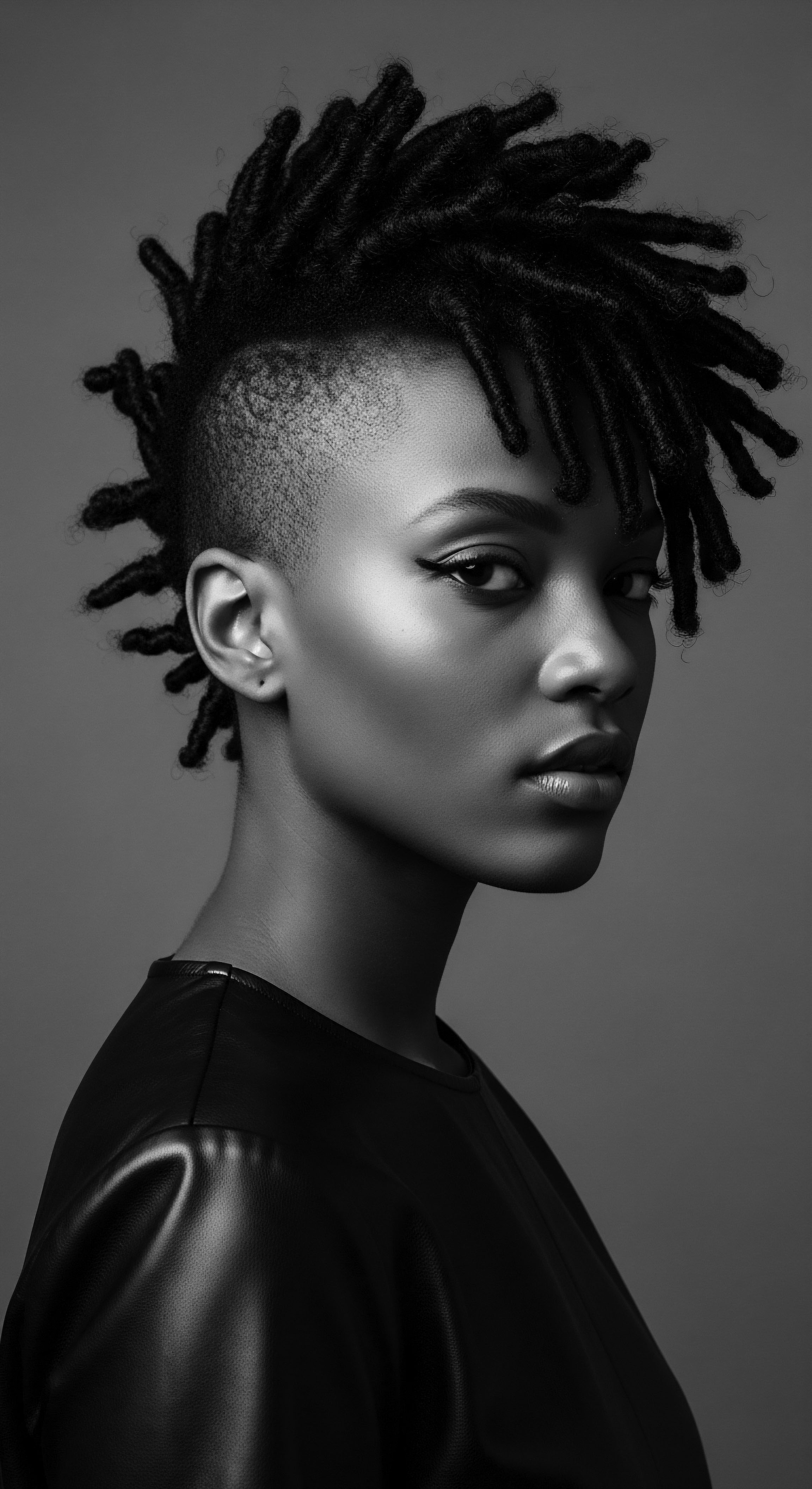
Solving Hair’s Challenges
Ancestral communities, like those today, confronted challenges to hair health, be it breakage, dryness, or scalp irritation. Their problem-solving methodologies were rooted in keen observation and iterative practice. They understood, for instance, that tightly coiling hair, while providing protection, also meant a natural struggle for scalp oils to spread down the strand. Remedies focused on constant re-application of emollients, gentle manipulation, and protective styles that minimized exposure to harsh elements.
The resilience inherent in textured hair, a trait cultivated through generations of environmental adaptation, was also bolstered by consistent care practices. Hair breakage, a common concern for highly coiled hair due to its unique structure and points of weakness, was addressed through tender detangling, the use of wide-toothed tools, and styles that reduced daily friction. This ancestral ingenuity in problem-solving, without the benefit of modern scientific instruments, highlights a profound, intuitive understanding of hair’s needs and its connection to the overall health of the person.

Reflection
To consider how ancestral heritage shapes hair is to embark upon a deep inquiry into the very fabric of human existence. From the subtle biological adaptations encoded in our genes, echoing ancient suns and winds, to the powerful cultural narratives woven into every style and ritual, our hair tells a story of survival, artistry, and profound connection. It is a living, breathing archive, each strand holding the memory of journeys taken, wisdom gathered, and identities affirmed against the currents of time.
The textured hair on our heads stands as a vibrant monument to resilience. It speaks of those who, despite unimaginable adversity, preserved cultural practices, transforming acts of forced conformity into expressions of self and symbols of hope. The collective memory of cornrows secretly mapping routes to freedom, or the everyday dignity found in a meticulously wrapped head, reminds us that heritage is not static. It breathes, adapts, and speaks anew through each generation.
As we move forward, armed with both ancestral wisdom and contemporary scientific understanding, our relationship with textured hair continues to evolve. It becomes a conscious act of reverence, a celebration of inherited beauty, and a commitment to nurturing what has been passed down. The care we extend to our strands is a conversation with the past, a grounding in the present, and a hopeful declaration for the future. Our hair, truly, is the soul of a strand, a timeless testament to where we come from and where we are going.
References
- Afriklens. (2024). African Hairstyles ❉ Cultural Significance and Legacy. (Retrieved from web article which cites broader historical facts, but direct academic papers for specific claims like cornrow maps are often detailed in historical and anthropological texts such as those by Byfield or Akintunde).
- BLAM UK CIC. (2022). The history of Black Hair. (Retrieved from web article which cites broader historical facts, but direct academic papers for specific claims like cornrow maps are often detailed in historical and anthropological texts such as those by Byfield or Akintunde).
- Cruz, H. et al. (2012). The unique structural and physical properties of African hair. (Likely a research paper referenced by articles such as Cosmetics & Toiletries).
- CurlyTreats. (2025). Afro comb ❉ the cultural and political legacy behind this iconic hair tool. (General web article citing archaeological finds; for specific archaeological reports, look for publications by archaeologists like Pamela Jane Smith or exhibitions such as “Origins of the Afro Comb”).
- Draelos, Z. D. (1997). Understanding African-American hair. Dermatologic Nursing, 9(4), 227-231.
- Franbourg, A. Hallegot, P. Baltenneck, F. Toutain, C. & Leroy, F. (2003). Current research on ethnic hair. Journal of the American Academy of Dermatology, 48(6 Suppl), S115-S119.
- KOMA Club. (2024). THE HAIR COMB THE TRUTH ABOUT ITS ORIGIN. (General web article citing archaeological finds; for specific archaeological reports, look for publications by archaeologists like Pamela Jane Smith or exhibitions such as “Origins of the Afro Comb”).
- Lasisi, T. et al. (2023). Human scalp hair as a thermoregulatory adaptation. Proceedings of the National Academy of Sciences. (This is the academic paper behind the SciTechDaily summary).
- Library of Congress. (2023). Heavy is the Head ❉ Evolution of African Hair in America from the 17th c. to the 20th c. (Web article from a reputable institution, citing historical accounts and slave narratives; deeper academic sources would involve specific historical texts on the transatlantic slave trade and cultural resistance).
- McMichael, A. J. (2003). Ethnic hair update ❉ past and present. Journal of the American Academy of Dermatology, 48(6 Suppl), S127-S133.
- Ndikini, E. M. et al. (2024). The Genomic Variation in Textured Hair ❉ Implications in Developing a Holistic Hair Care Routine. Preprints.org. (Direct academic source).
- Robbins, C. R. (2012). Chemical and Physical Behavior of Human Hair. Springer Science & Business Media. (A foundational text in hair science, likely covering ellipticity and other structural differences mentioned in snippets).
- Scott, D. A. (1988). Disorders of the hair and scalp in blacks. Dermatologic Clinics, 6(3), 387-395.
